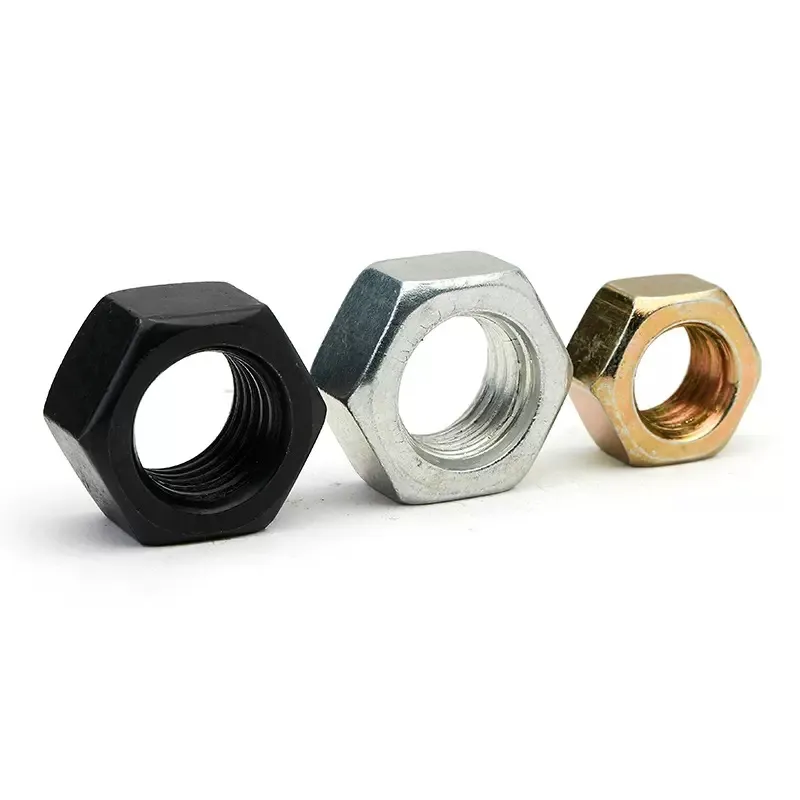

M5 Flange Nut Specifications and Applications for Effective Fastening Solutions
Oct . 18, 2024 06:48 Back to list
M5 Flange Nut Specifications and Applications for Effective Fastening Solutions
Understanding M5 Flange Nuts A Key Component in Fastening Solutions
When it comes to mechanical engineering and assembly, the importance of reliable fastening components cannot be overstated. Among these components, the M5 flange nut stands out as a versatile and efficient option, ideal for various applications in manufacturing and construction. This article explores the characteristics, benefits, and applications of the M5 flange nut, shedding light on why this small yet mighty component is essential in the world of fastening solutions.
What is an M5 Flange Nut?
An M5 flange nut is a type of nut that features a built-in flange—a wide, flat surface that extends from the base of the nut. This flange serves multiple purposes, primarily enhancing the nut's load distribution and providing a stable bearing surface. The M5 designation indicates that it is compatible with M5 bolts, meaning that its internal thread diameter measures 5 mm. Typically made from materials such as steel, stainless steel, or nylon, M5 flange nuts are known for their durability and resistance to corrosion, making them suitable for a variety of environments.
Advantages of Using M5 Flange Nuts
1. Improved Load Distribution One of the primary advantages of flange nuts is their ability to distribute load over a wider area compared to standard nuts. This characteristic reduces the risk of damaging the assembly surface and enhances the overall stability of the connection.
2. Reduced Risk of Loosening The flange design helps to prevent loosening that can occur from vibrations or torque. This makes M5 flange nuts particularly useful in automotive and machinery applications where movement is frequent.
3. Faster Installation M5 flange nuts are easier and quicker to install compared to regular nuts, as the flange can help hold the nut in place during assembly. This can significantly speed up the manufacturing and assembly processes, saving labor costs and time.
flange nut m5

4. Versatile Applications The versatility of M5 flange nuts allows them to be used in various sectors, including automotive, aerospace, electronics, and construction. Whether securing components in machinery, assembling furniture, or fastening electrical enclosures, these nuts prove their worth.
Applications of M5 Flange Nuts
M5 flange nuts find applications in numerous fields due to their reliability and efficiency
- Automotive Industry In vehicles, M5 flange nuts are commonly used in the assembly of various parts, including engine components, suspension systems, and body panels. Their ability to withstand vibration and movement makes them ideal for such applications.
- Electronics In the electronics sector, M5 flange nuts are used to secure circuit boards and various components within enclosures. The reduced risk of loosening ensures that electronic components remain securely fastened, maintaining electronic integrity.
- Furniture Manufacturing M5 flange nuts offer a streamlined solution in furniture assembly, where rapid production and assembly are vital. Their ease of use results in faster manufacturing times, making them a popular choice among furniture makers.
Conclusion
In conclusion, the M5 flange nut embodies the innovative design needed to meet the demands of modern mechanical systems. With their ability to distribute loads effectively, reduce loosening, and provide ease of installation, M5 flange nuts are a critical component across various industries. As technology continues to advance, the demand for efficient and reliable fastening solutions like the M5 flange nut will only grow. By understanding their features and applications, engineers and manufacturers can harness the full potential of this remarkable fastening component, ensuring robust and enduring assemblies in their projects.
Latest news
-
Hot Dip Galvanized Bolts-About LongZe|High Strength, Corrosion Resistance
NewsJul.30,2025
-
High-Strength Hot Dip Galvanized Bolts - Hebei Longze | Corrosion Resistance, Customization
NewsJul.30,2025
-
Hot Dip Galvanized Bolts-Hebei Longze|Corrosion Resistance&High Strength
NewsJul.30,2025
-
High-Strength Hot-Dip Galvanized Bolts-Hebei Longze|Corrosion Resistance&High Strength
NewsJul.30,2025
-
Hot Dip Galvanized Bolts-Hebei Longze|Corrosion Resistance&High Strength
NewsJul.30,2025
-
Hot Dip Galvanized Bolts - Hebei Longze | Corrosion Resistance, High Strength
NewsJul.30,2025

